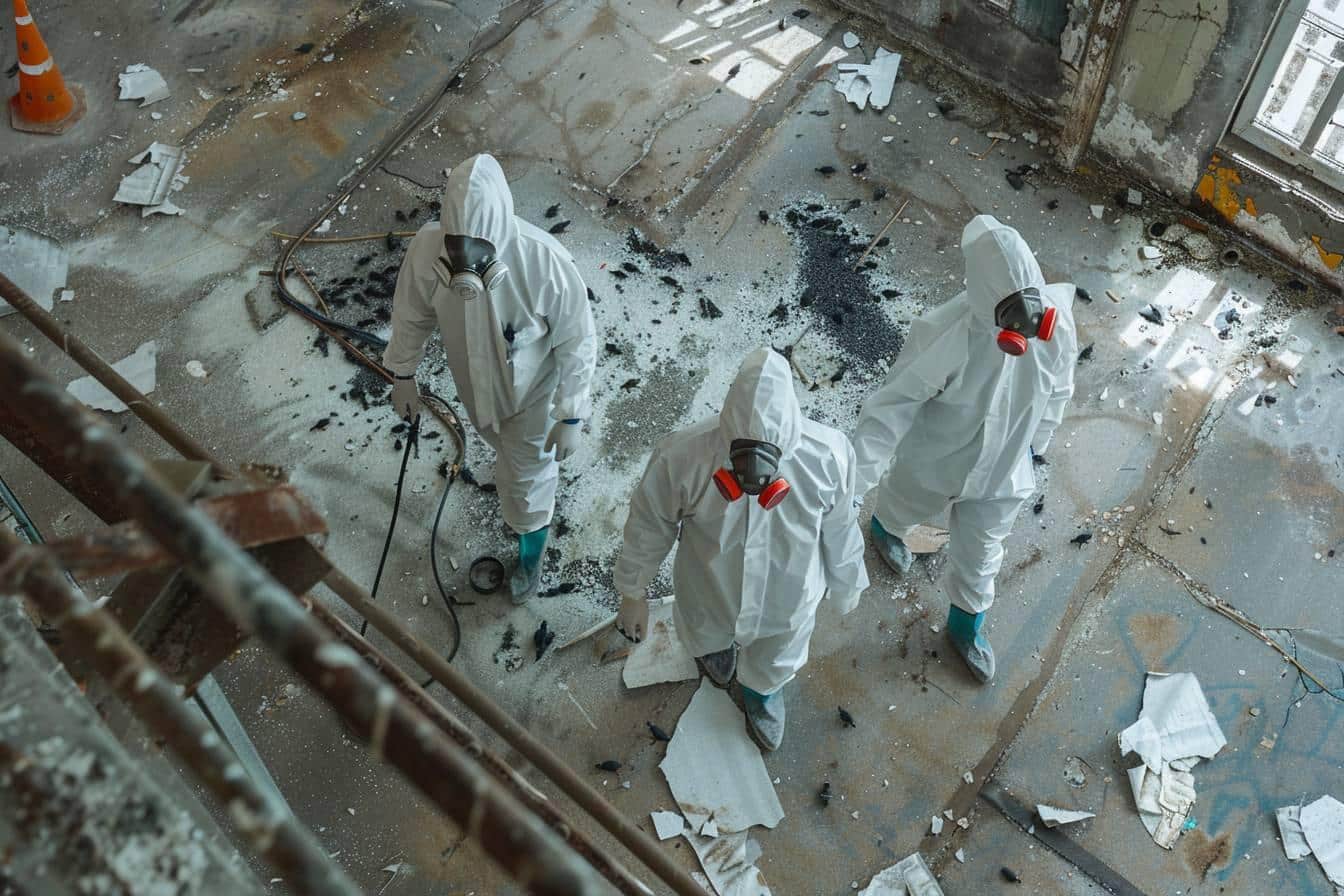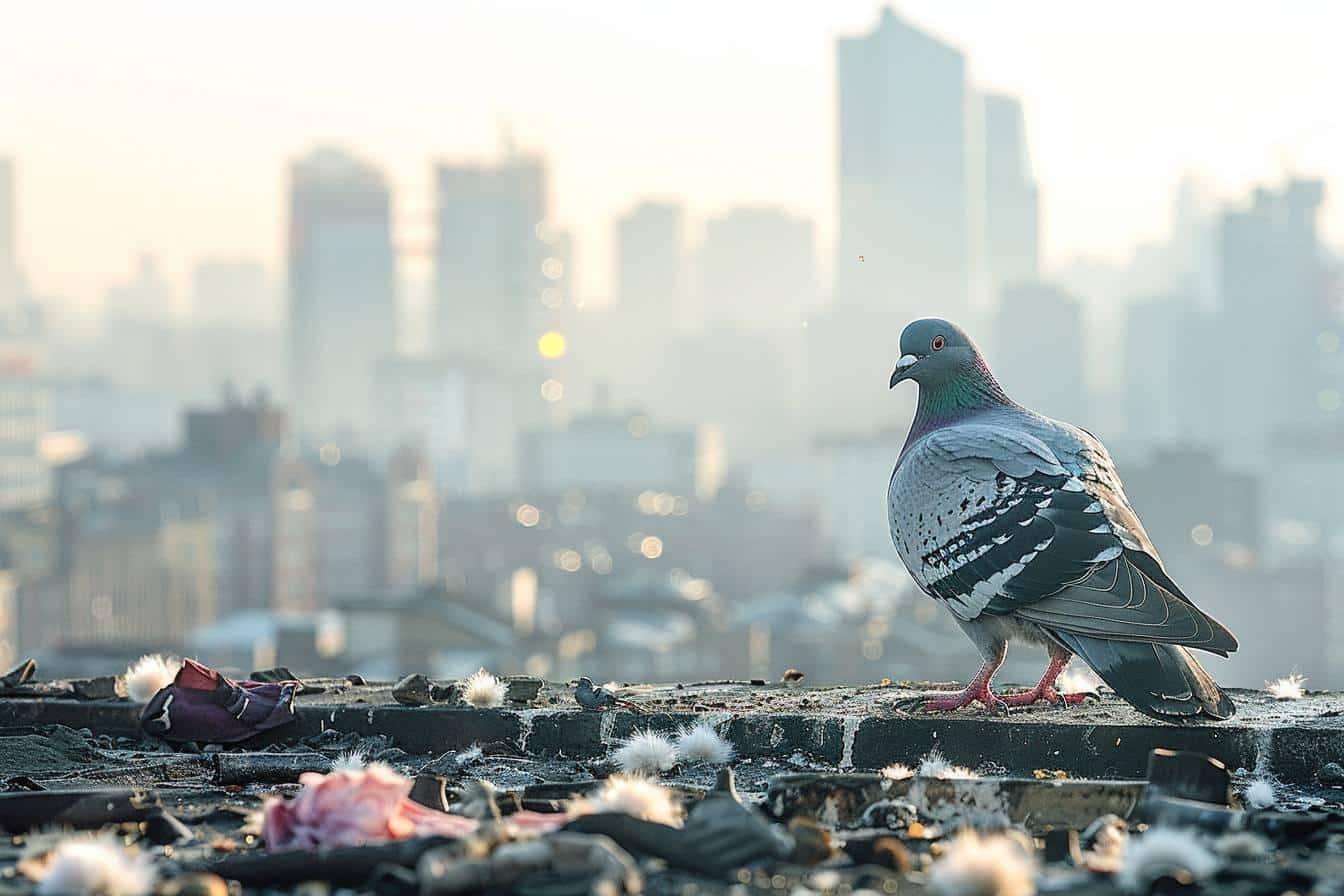Pigeon droppings, a common sight in urban environments, pose significant health risks and challenges for city dwellers. These avian excretions not only create unsightly messes but also harbor potential dangers to human health. This article delves into the risks associated with pigeon feces, provides effective cleaning methods, and outlines prevention strategies to maintain cleaner and safer urban spaces.
Health hazards of pigeon droppings
Pigeon droppings are more than just a nuisance; they present serious health concerns for humans. These feces can carry various pathogens, including bacteria, fungi, and parasites, capable of causing severe illnesses. One of the most notable health risks associated with pigeon excrement is histoplasmosis, a respiratory disease caused by inhaling spores of the fungus Histoplasma capsulatum.
Other potential health hazards linked to pigeon droppings include :
- Cryptococcosis : A fungal infection affecting the lungs and central nervous system
- Psittacosis : A rare bacterial infection that can cause pneumonia-like symptoms
- Salmonellosis : A bacterial infection leading to gastrointestinal issues
- E. coli infections : Potentially causing severe diarrhea and other complications
The danger of these diseases increases in areas with high concentrations of pigeon droppings, such as urban centers, parks, and buildings with ledges or overhangs. Individuals with compromised immune systems, the elderly, and young children are particularly vulnerable to these health risks. Moreover, dried pigeon feces can become airborne, potentially spreading harmful pathogens over wider areas.
To illustrate the prevalence of diseases associated with pigeon droppings, consider the following table :
| Disease | Causative Agent | Primary Symptoms |
|---|---|---|
| Histoplasmosis | Histoplasma capsulatum | Fever, chest pain, cough |
| Cryptococcosis | Cryptococcus neoformans | Headache, fever, lung infection |
| Psittacosis | Chlamydophila psittaci | Flu-like symptoms, pneumonia |
| Salmonellosis | Salmonella bacteria | Diarrhea, fever, abdominal cramps |
Effective cleaning techniques for pigeon feces
Proper cleaning of pigeon droppings is crucial to minimize health risks and maintain a hygienic environment. When dealing with bird excrement, it’s essential to follow safe and effective cleaning procedures. Here are some recommended techniques for removing pigeon feces :
1. Protective gear : Before starting the cleaning process, don appropriate personal protective equipment (PPE). This includes :
- Disposable gloves
- N95 respirator mask
- Protective eyewear
- Coveralls or old clothing
2. Moistening the droppings : To prevent the release of airborne particles, lightly spray the affected area with water mixed with a disinfectant solution. This step is crucial as it helps contain potentially harmful spores.
3. Removal process : Use a plastic scraper or shovel to carefully remove the moistened droppings. Place the waste in a sealed plastic bag for disposal. For larger areas, consider using a wet vacuum cleaner specifically designed for this purpose.
4. Disinfection : After removing the bulk of the droppings, thoroughly clean the area with a strong disinfectant solution. A mixture of bleach and water (1 part bleach to 9 parts water) is effective in killing remaining pathogens. Allow the solution to sit for at least 10 minutes before rinsing.
5. Final cleaning : Rinse the area with clean water and dry thoroughly. For porous surfaces like concrete, multiple cleanings may be necessary to remove stains and odors completely.
It’s important to note that for extensive contamination or areas difficult to access, professional cleaning services specializing in biohazard removal should be consulted. These experts have the necessary equipment and expertise to handle large-scale pigeon dropping cleanups safely and effectively.

Prevention strategies for urban environments
Preventing pigeon infestations and reducing droppings in urban areas requires a multi-faceted approach. Implementing effective prevention methods can significantly decrease the presence of pigeons and their associated health risks. Here are some strategies to consider :
1. Physical barriers : Installing barriers is one of the most effective ways to deter pigeons from roosting and nesting. Options include :
- Bird spikes on ledges, window sills, and rooftops
- Netting over open areas or courtyards
- Sloped surfaces on flat ledges to prevent perching
2. Visual deterrents : Utilize visual scare tactics to discourage pigeons from settling in an area. These can include :
- Reflective tape or CDs hung in strategic locations
- Predator decoys like plastic owls or hawks (rotate positions regularly)
- Holographic visual deterrents that create moving images
3. Sound deterrents : Employ audio devices that emit predator calls or distress signals to create an unwelcoming environment for pigeons. However, be mindful of noise regulations in residential areas.
4. Habitat modification : Reduce attractants that draw pigeons to urban spaces :
- Secure garbage containers and regularly clean up food waste
- Educate the public about the importance of not feeding pigeons
- Remove standing water sources that pigeons use for drinking
5. Chemical repellents : Apply non-toxic, FDA-approved gel or liquid repellents on common roosting areas. These products create uncomfortable surfaces for pigeons to land on, discouraging their presence.
6. Building design considerations : When designing or renovating buildings, incorporate pigeon-deterrent features such as :
- Smooth, vertical surfaces that are difficult for pigeons to perch on
- Angled ledges (45 degrees or more) to prevent nesting
- Enclosed eaves and overhangs to eliminate roosting spots
7. Regular maintenance : Implement a consistent cleaning and maintenance schedule to quickly address any pigeon-related issues :
- Promptly remove nests and eggs (following local regulations)
- Clean and disinfect affected areas regularly
- Repair damaged structures that may provide nesting opportunities
By combining these prevention strategies, urban environments can significantly reduce pigeon populations and minimize the associated health risks and cleanup costs. It’s crucial for city planners, building managers, and residents to work together in implementing these measures for long-term success in managing pigeon-related challenges.

